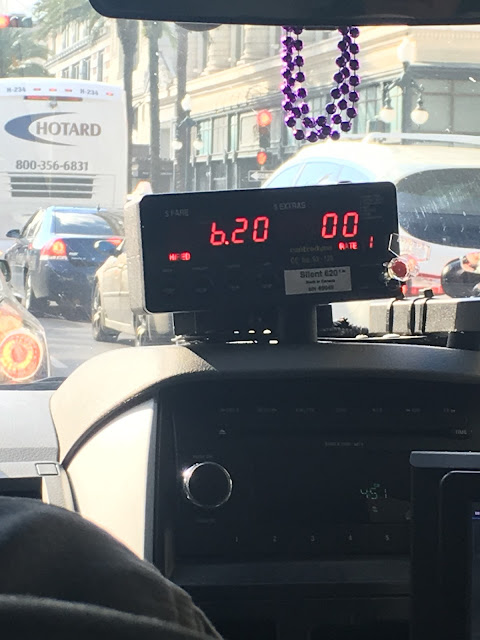 |
On April 7, a high-stepping grand marshal leading the New Wave Brass Band helped kick off the French Quarter Festival, an annual four-day showcase for the city's unique music and food.
|
Editor's note: This is the last of four posts based on a six-day visit to New Orleans this month.
By VICTOR E. SASSON
EDITOR
NEW ORLEANS -- "I hate to see that evenin' sun go down."
This famous blues song is always on the mind of New Orleanians, who say crime has made staying out after dark a risky proposition.
The Big Easy has become the Big Uneasy.
Signs of renewal outside the French Quarter more than a decade after Hurricane Katrina are everywhere, but residents don't feel police can protect them.
The quarter was largely untouched by Katrina, residents say, because it is the highest point in a city sandwiched between the Mississippi River and Lake Pontchartrain.
Ex-mayor in prison
Mayor Mitch Landrieu, who was elected in 2010, isn't regarded as much of an improvement over former Mayor Ray Nagin, who was sent to federal prison for his part in a $500,000 bribery and conspiracy scheme.
Nagin, like then-President George W. Bush, failed the largely minority city during and after Hurricane Katrina struck in August 2005.
Meanwhile, the Pulitzer Prize-winning daily newspaper, The Times-Picayune, not only abandoned the city by moving its headquarters out of town, but in the fall of 2012, cut back its print edition to only three days a week.
Still, the city's indomitable spirit was evident during a six-day visit this month.
 |
| A 150-foot mural of a clarinet on the Holiday Inn in downtown New Orleans is a tribute to a neighborhood that played a key role in the development of jazz. |
 |
One of the city's palm trees seen against the vacant World Trade Center.
|
 |
| The colorful exterior of what is now called Kermit's Treme Mother-In-Law Lounge includes a portrait of Ruffins, below. |
 |
Kermit's Treme Mother-In-Law Lounge is at 1500 N. Claiborne Ave. in New Orleans (504-975-3955).
|
 |
| A quiet pedestrian space in the French Quarter. |
 |
French Quarter architecture provides shady sidewalks and balconies for people watching.
|
 |
St. Louis Cathedral, which overlooks Jackson Square, is said to be the oldest Catholic cathedral in continuous use in the United States.
|
 |
Although the cathedral was named after a French king, the scallop shell over the pulpit often symbolizes St. James, the patron saint of Spain.
|
 |
This St. Charles Avenue streetcar is one of the originals, and doesn't have air conditioning, but is a cheap way to see New Orleans' Garden District, where homes date to before the Civil War.
|
 |
The streetcar passes an historical plaque noting that a factory at 1755 St. Charles Ave. produced more than 20,000 shallow-draft landing craft for allied forces during World War II.
|
 |
| Homes in the Garden District, above and below. |
 |
| Other streetcars, including those that operate on Canal Street, are new and fully air conditioned, above and below. The fare is $1.25 or $3 for a 24-hour pass. Seniors pay only 40 cents. |
 |
Crawfish Cakes at Mandina's, an Italian-American restaurant in New Orleans. See: Good food is everywhere in Crescent City
|
 |
A small Muffaletta Sandwich -- olive salad with Italian cold cuts and cheese -- was $10 at Louis Armstrong New Orleans International Airport in Kenner, La.
|
Next: In North Jersey,
you have to read the labels,
even with seafood.









No comments:
Post a Comment
Please try to stay on topic.